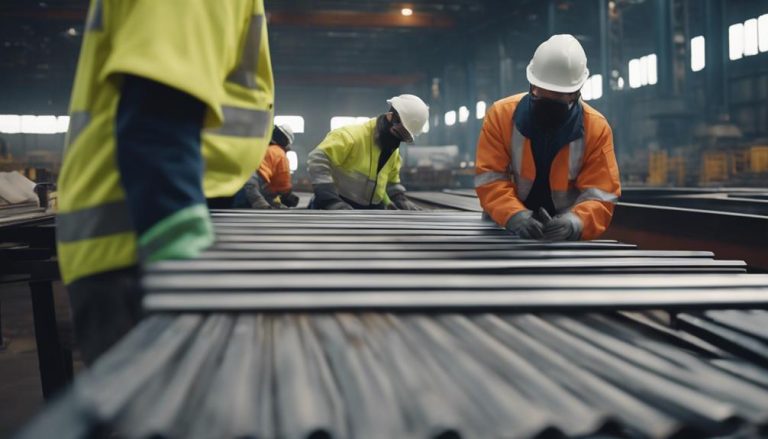
Safety Assurance Strategies for High-Quality Steel Factory Production
To guarantee high-quality steel production, prioritize equipment maintenance and inspections. Regular checks reduce breakdown risks, saving on repair costs. Develop and implement a robust safety policy with clear procedures and training for all employees. Provide proper Personal Protective Equipment (PPE) in line with industry standards. Adhere to OSHA regulations to guarantee workplace safety and avoid penalties. Conduct thorough training programs to equip workers with hazard awareness and reporting skills. By focusing on these safety assurance strategies, steel factories can maintain both quality production and worker well-being.
Key Takeaways
- Implement a comprehensive equipment maintenance program to reduce breakdown risks and ensure peak performance.
- Develop and implement a robust safety policy with clear procedures to decrease accidents and injuries.
- Prioritize proper PPE provision, training, and regular inspections to guarantee worker safety.
- Adhere to OSHA regulations to reduce workplace accidents, injuries, and ensure employee safety.
- Conduct regular training programs for employees to equip them with knowledge and skills for hazard prevention.
Steel Factory Equipment Maintenance and Inspections
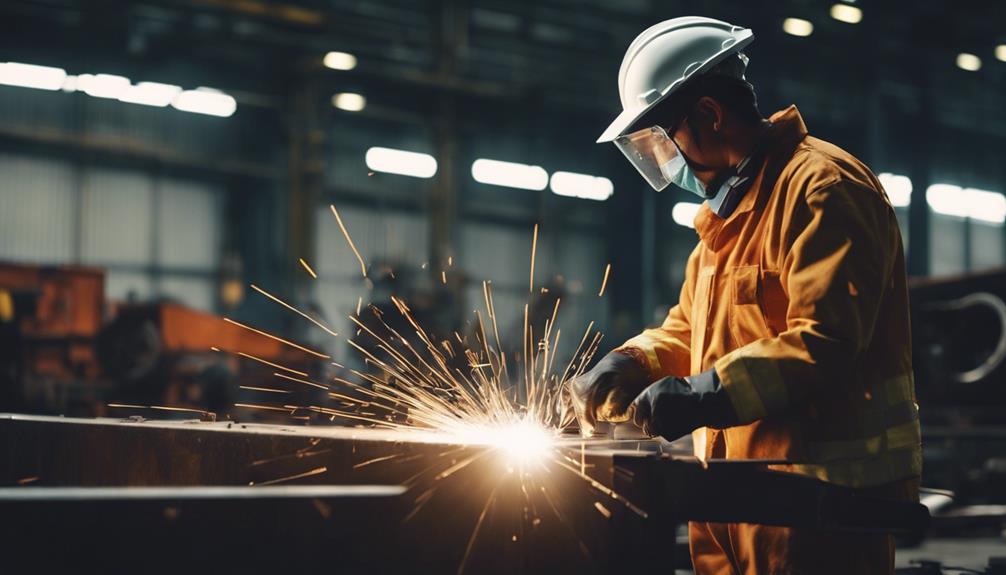
Implementing a comprehensive equipment maintenance and inspection program is vital for guaranteeing the safety, efficiency, and productivity of steel factory production processes. Regular maintenance checks on equipment not only reduce breakdown risks but also ensure peak performance in the factory. Properly functioning machinery not only saves on repair costs but also improves overall productivity. Routine inspections play an essential role in identifying potential issues early, thereby reducing the risk of accidents and production delays in a steel factory setting.
Incorporating safety policies that include equipment maintenance guidelines is paramount. Such policies not only enhance worker safety but also prevent accidents, fostering a culture of safety and responsibility among factory workers. By having a structured safety and maintenance plan in place, the steel factory can proactively address maintenance needs, adhere to safety protocols, and create a secure working environment for all employees. Ultimately, prioritizing equipment maintenance and inspections is a cornerstone in ensuring the smooth operation and success of a steel factory.
Safety Policy Development and Implementation
To ensure the ongoing safety and operational efficiency of a steel factory, the development and implementation of a robust safety policy are essential.
For steel manufacturers, safety procedures must be clearly outlined within the policy to decrease accidents and injuries, ensuring a secure work environment. This includes protocols for handling hazardous materials and providing thorough safety training for all employees.
Additionally, the safety policy should establish procedures for reporting incidents or hazards, fostering a culture of responsibility and accountability among the workforce.
By implementing such safety protocols, steel manufacturers can not only enhance the safety of their operations but also drive improved productivity, employee well-being, and overall business success.
Regular updates on safety policies, along with continuous staff training and engagement, are crucial for the effective development and implementation of a safety policy within a steel factory setting.
Proper Personal Protective Equipment (PPE) Usage
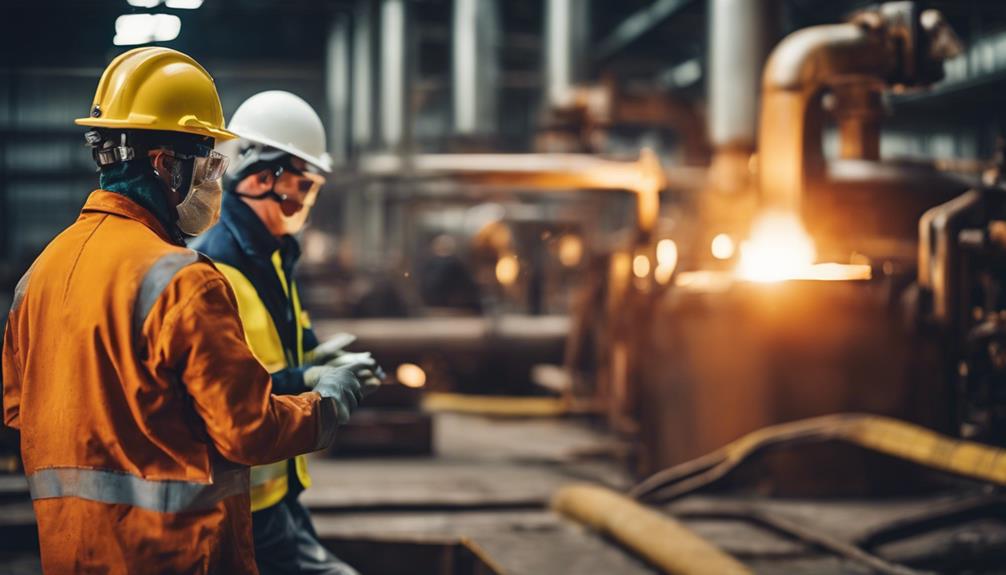
Personal Protective Equipment (PPE) plays an essential role in guaranteeing the safety of workers in a steel factory environment. Steel companies and suppliers must prioritize providing proper PPE, such as respiratory masks, eyewear, gloves, and ear protection, to safeguard employees in stainless steel factories. These items are vital in reducing occupational injuries by preventing eye injuries from debris, respiratory issues from dust, and hand injuries from sharp objects.
Adequate training on PPE usage is critical for workers to understand when and how to utilize protective equipment effectively. PPE should meet industry standards and undergo regular inspections to ensure its functionality in protecting workers. Compliance with PPE requirements not only enhances safety but also fosters a culture of responsibility and risk mitigation within the steel factory.
Properly utilizing PPE is a fundamental aspect of ensuring the well-being of workers in the steel manufacturing industry.
OSHA Compliance and Regulations Adherence
Adhering to OSHA compliance and regulations is essential for ensuring the safety and well-being of employees in a steel factory setting. OSHA regulations establish safety and health standards that, when followed, greatly reduce workplace accidents and injuries.
Employers failing to comply with these regulations risk facing fines and penalties. It is the responsibility of employers to provide a safe working environment for their employees in adherence to OSHA guidelines.
Regular OSHA inspections play an important role in ensuring workplace safety and regulatory compliance within the steel factory.
Training Programs for Employee Safety
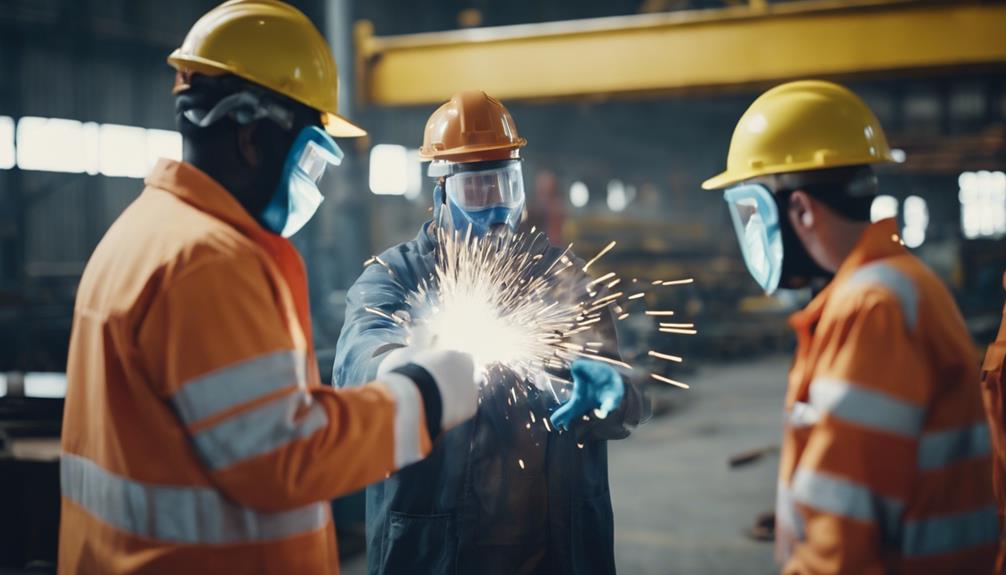
Steel factory employee safety is paramount, and training programs play a crucial role in equipping workers with the knowledge and skills necessary to navigate potential workplace hazards effectively. These programs cover various aspects, including machine operation instructions, emergency response protocols, and hazard awareness sessions.
Employees undergo thorough training on the proper usage of personal protective equipment (PPE) such as respiratory masks, eyewear, and hand protection. Emphasis is placed on the early reporting of hazards, accidents, and near misses to prevent future incidents.
Regular safety training sessions guarantee that employees are well-prepared to handle potential risks and emergencies in the workplace. Additionally, these training programs contribute to fostering a strong safety culture within the steel factory, encouraging a proactive approach to accident prevention and risk mitigation.
Fostering a Strong Safety Culture for Steel Factory
To cultivate a robust safety culture within a steel factory, proactive measures must be taken to instill a collective commitment to prioritizing safety at all levels of the organization. Establishing regular safety training sessions is essential to educate employees on best practices and procedures, ensuring they are equipped to navigate potential hazards effectively.
Implementing a safety recognition program can further incentivize and reward safe behavior in the workplace, reinforcing the importance of safety protocols. Conducting frequent safety audits and inspections is vital for identifying and mitigating risks promptly, while also ensuring compliance with established safety standards.
Moreover, creating open communication channels for reporting safety concerns and near misses encourages timely intervention and resolution. This transparency fosters a culture where safety is not just a priority but a shared responsibility. Leadership plays a pivotal role in promoting a safety-first mindset by setting examples and actively engaging in safety initiatives.
To sum up, incorporating safety assurance strategies in high-grade steel factory production is essential for ensuring the welfare of employees, adherence to regulations, and the overall prosperity of the business.
By emphasizing equipment maintenance, safety policy development, appropriate PPE usage, OSHA compliance, training programs, and cultivating a robust safety culture, companies can establish a workplace environment that reduces risks and encourages a culture of safety and excellence in production.
Frequently Asked Questions
Can You Provide Examples of Common Hazards or Safety Risks Specific to Steel Factory Production That Employees Should Be Aware Of?
Employees in steel factory production must be aware of common hazards like exposure to molten metal, high temperatures, heavy machinery accidents, and chemical exposure. Safety training, proper equipment use, and adherence to protocols are essential for a secure work environment.
How Does the Steel Factory Ensure That All Equipment Used in Production Is up to Date and in Proper Working Condition?
To guarantee maximum operational efficiency and safety, the steel factory conducts regular equipment inspections, maintenance, and calibration procedures. The implementation of a strict schedule for equipment check-ups and upgrades helps ensure that all machinery is up to date and functioning correctly.
Are There Any Specific Industry Best Practices for Implementing Safety Policies Within a Steel Factory Setting?
Implementing safety policies in a steel factory involves adherence to industry best practices. These may include regular safety audits, employee training programs, hazard identification protocols, and continuous improvement initiatives to guarantee a safe working environment for all personnel.
What Measures Are in Place to Ensure That Employees Are Consistently Using the Proper Personal Protective Equipment (Ppe) Required for Their Specific Tasks?
Ensuring consistent use of proper personal protective equipment (PPE) is vital for employee safety in industrial settings. Implementing regular training, strict enforcement policies, providing readily accessible PPE, and conducting frequent audits are key measures to enforce compliance.
How Does the Steel Factory Stay up to Date With the Latest OSHA Compliance Regulations and Ensure Adherence Throughout the Production Process?
To guarantee compliance with OSHA regulations, the steel factory employs dedicated safety officers who regularly review and update protocols. Training sessions and audits are conducted to ensure adherence throughout the production process, fostering a culture of safety and compliance.
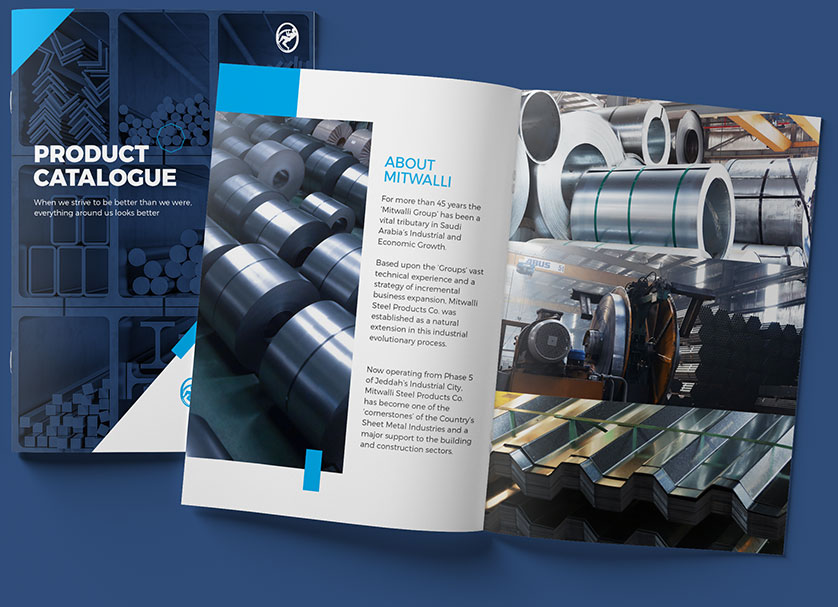
Add New Comment